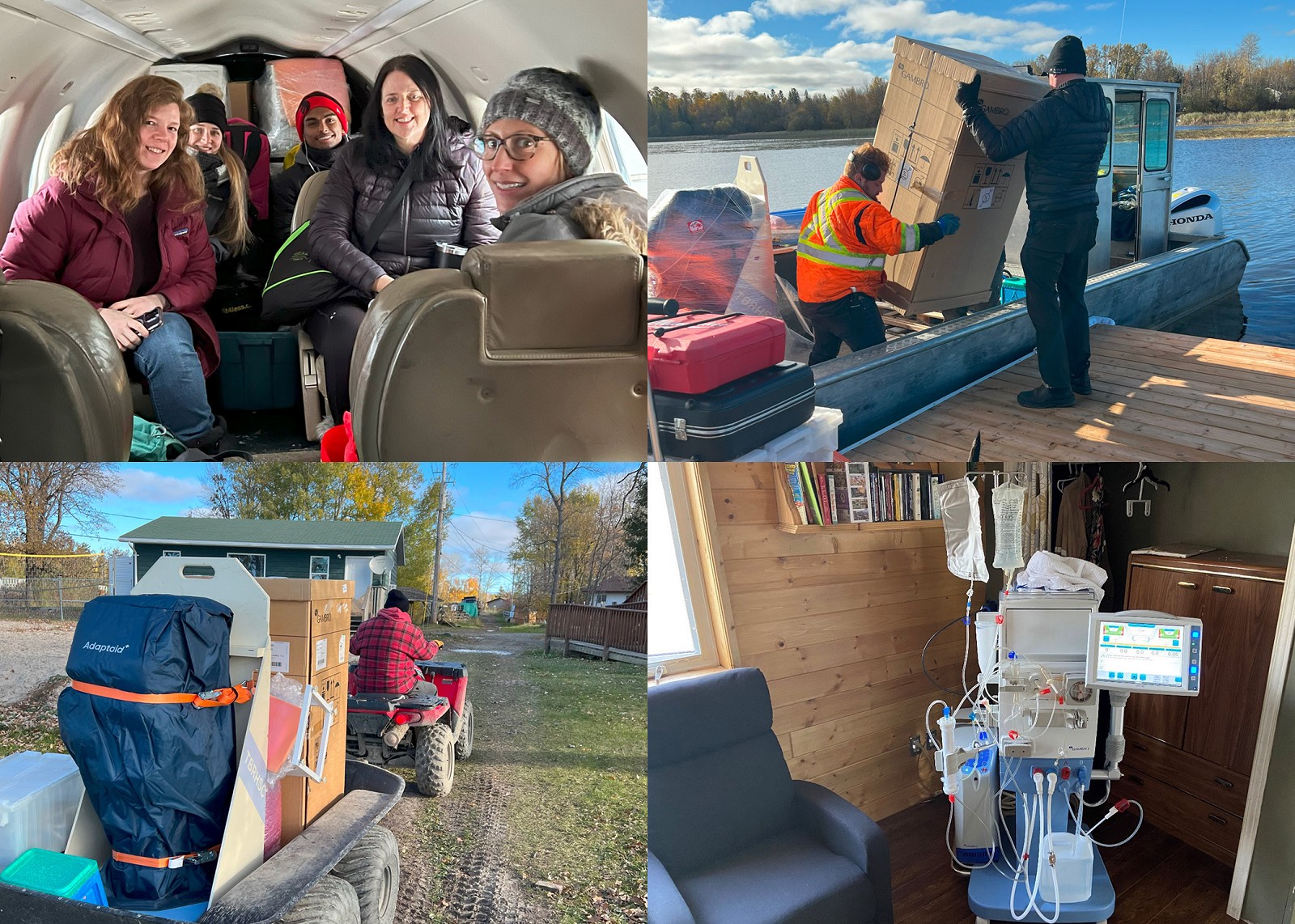Bringing Life-Saving Dialysis to Northern Communities
Published Monday, April 14, 2025

The Home Hemodialysis team travels by air, rail, water, and land to ensure Renal patients in Northwestern Ontario can get their life-saving dialysis in their home communities. (Photos by Mike Smit)
Hemodialysis is a lifesaving therapy option to clean your blood when your kidney's no longer work.
In communities across Northwestern Ontario, patients with kidney failure who need dialysis are often faced with a heartbreaking reality: in order to get life-saving dialysis they have to leave everything behind – their families, friends, careers, and their homes.
Thanks to donor support, efforts are underway to bring hemodialysis closer to home for more patients across the region.
In communities like Fort Frances, Sioux Lookout, and Kenora, dialysis units are often full and may be waitlisted. If patients can't secure a spot they can stay in Thunder Bay for treatment while they wait, or move permanently to Thunder Bay to receive care.
The Home Hemodialysis (HHD) team has been working to change that by bringing hemodialysis into people's homes – no matter how remote the community may be – so patients can be surrounded by loved ones and maintain their way of life.
“Hemodialysis patients require a dialysis treatment on average from three to four times per week, for approximately four hours per session,” said Ramsey Broennle, RN, and CKD Lead, Northwest Renal Program, TBRHSC. “You can imagine how much of a relief it is to be able to do your own care at home.”
Over the past decade, the HHD program has expanded and trained patients from communities such as Kitchenuhmaykoosib Inninuwug (K.I.), Wunnumin Lake, Sandy Lake, Pikangikum, Weagamow, Animakee Wa Zhing 37 First Nation, Namaygoosisagagun, and more to perform their own treatments at home.
“Success for patients in the home setting depends largely on their active engagement and motivation, which are essential for achieving positive health outcomes and maintaining independence during their return to home,” said Lori LaChimea, RN, HHD Educator.
Getting these systems in place is truly a team effort. In order to install the equipment, the HHD RN's and Technologists travel into the community with all required equipment (weighing 600lbs) and supplies. The team collaborates with the local Chief and Council, as well as patients and their families, to arrange suitable transportation in the community. From icy runways to snow-covered trails, the HHD team travels by plane, train, truck, ATV, boat, and even Skidoo to bring care directly to people's homes.
“Every community is different, and we work through many hurdles together.” Mike Smit, Senior Renal Biomedical Engineering Technologist at TBRHSC, shares, “The people we serve, and the communities themselves, are always incredibly welcoming.”
“One of many incredible stories is a patient who had built his dream retirement home completely off-grid, living at a lake, only to end up with kidney failure,” says Mike. He temporarily relocated to Thunder Bay for treatment, thinking his dream was over… but we were able assess his power and water and determine HHD was an option. He was able to complete the training, and now he's one of the only people in Canada running HHD with his sophisticated off-grid system.”
“If it's at all possible to get someone home, we will try our best to make it happen,” adds Ramsey.
Once a patient and their home are deemed suitable for HHD, training can begin at the HHD unit, which typically takes about eight weeks. Thanks to the support of Foundation donors, event participants, and 50/50 supporters, the HHD training facility will expand its capacity from three to five training spots, allowing more patients to train at once – so they can return home sooner!
At the time of this article, there are approximately 30 patients performing hemodialysis at home within the region. No matter the challenges, the team is passionate about their work because they know just how much it means.
“Every time someone gets home, you can see how much happier they are,” says Ramsey. “Being back with their families in their communities, that's what it's all about.”
Your donations to the Health Sciences Foundation, along with your support through Thunder Bay 50/50 ticket purchases and Foundation events, are making it possible to bring life-saving care closer to home for patients in our region. Thank you. See more stories like this at healthsciencesfoundation.ca/news
Article by Lindsay Doran-Bonk